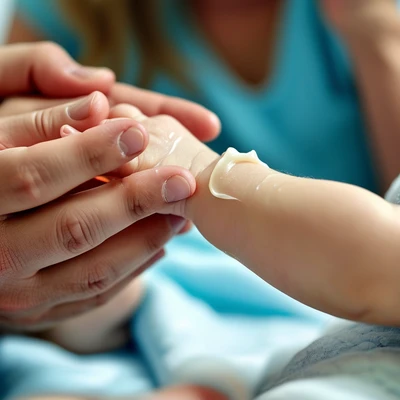Research led by Oregon Health & Science University has found that daily full-body emollient use starting before 9 weeks of age does not reduce the incidence of atopic dermatitis by the age of 24 months in infants from a representative US cohort.
Atopic dermatitis often progresses to food allergies or asthma, and many studies have linked skin barrier dysfunction with subsequent allergic diseases. However, evidence remains limited regarding full-body emollients for primary-care populations without elevated risk factors.
The study "Emollients to Prevent Pediatric Eczema," published in JAMA Dermatology, aimed to determine if once-daily application of an emollient reduces atopic dermatitis by age 24 months.
JAMA DermatologyA total of 1,247 infant-parent dyads were recruited from clinics in Colorado, North Carolina, Oregon, and Wisconsin.
Caregivers applied a neutral moisturizer across the infants' entire body daily, excluding scalp and diaper area if desired, beginning before they reached 9 weeks old. Control families refrained from routine use of emollients.
Adverse events and skin-care habits were tracked through surveys, while trained coordinators reviewed physician-recorded diagnoses from electronic health records without knowledge of the study's groups.
Main findings at 24 months showed that 36.1% (SE 2.1) of infants in the moisturizer group developed atopic dermatitis compared to 43.0% (SE 2.1) in controls, with a relative risk of 0.84 (95% CI 0.73–0.97; P=0.02).
Analysis revealed infants without a first-degree family history of atopy responded more strongly to the treatment (RR 0.75; 95% CI 0.60–0.90; P = .01), while those with a family history experienced no meaningful reduction in risk (RR 0.93; 95% CI 0.78-1.11). Curiously, low-risk infants had baseline rates of atopic dermatitis similar to those deemed high-risk.
Additionally, the treatment's effectiveness was significantly greater in households with dogs (RR 0.68; 95% CI 0.50–0.90; P = .01).
The study calculated a number-needed-to-treat of 15, implying that out of 15 infants treated for atopic dermatitis prevention, only one would benefit.


